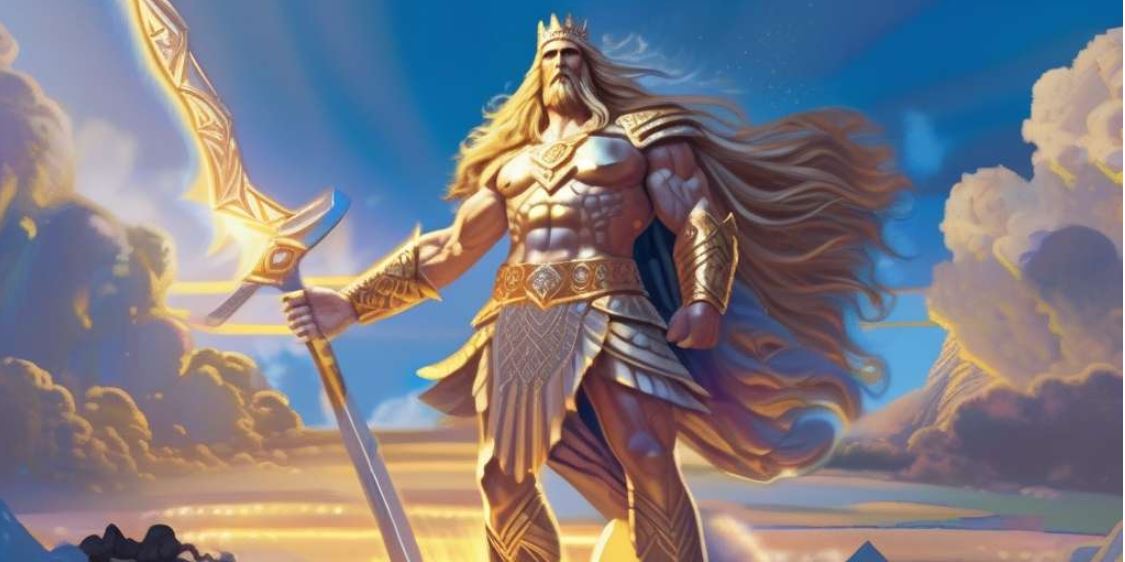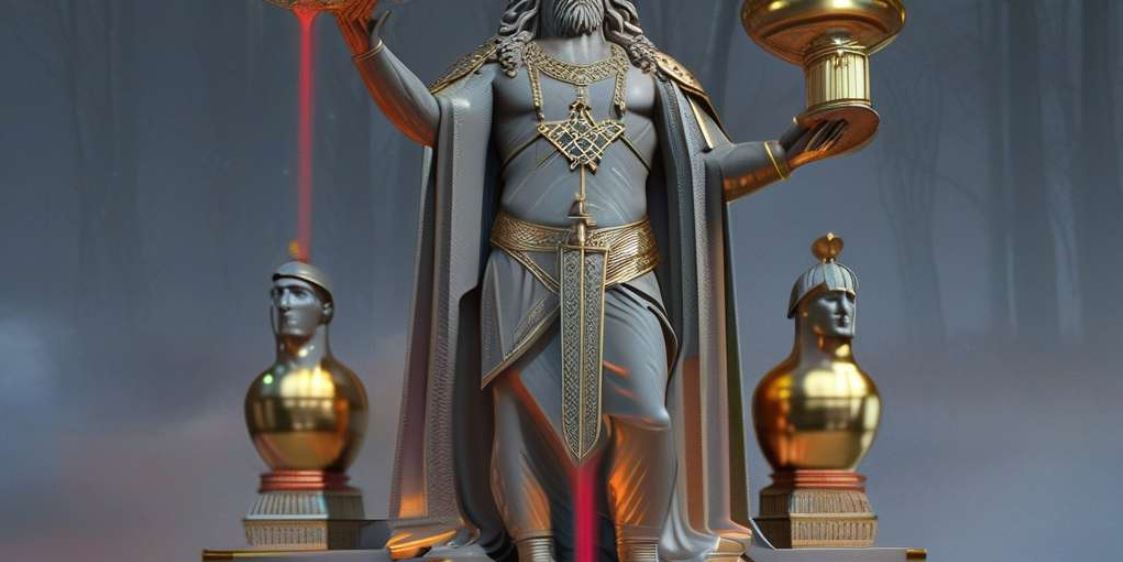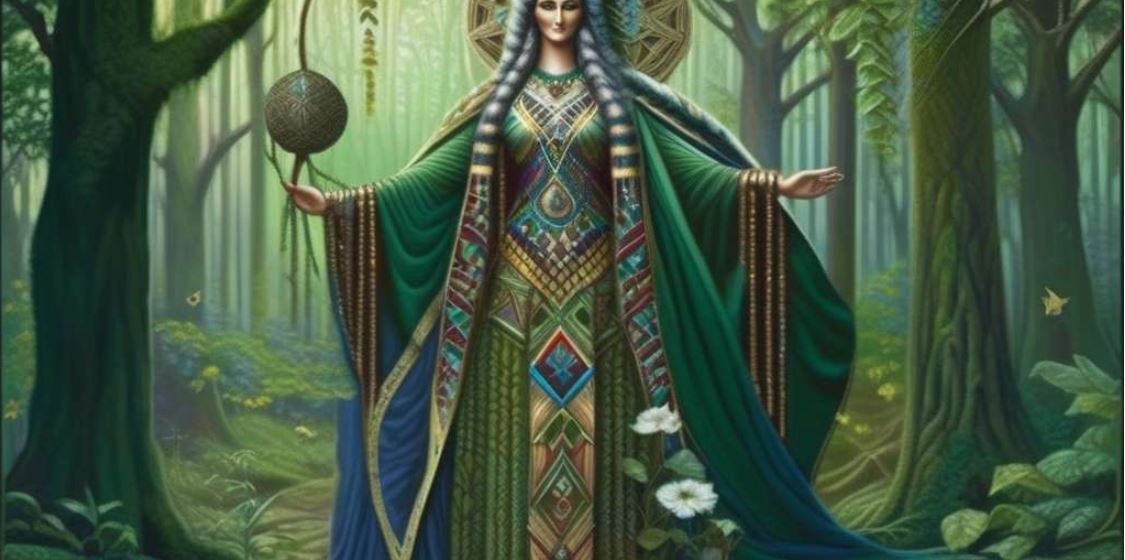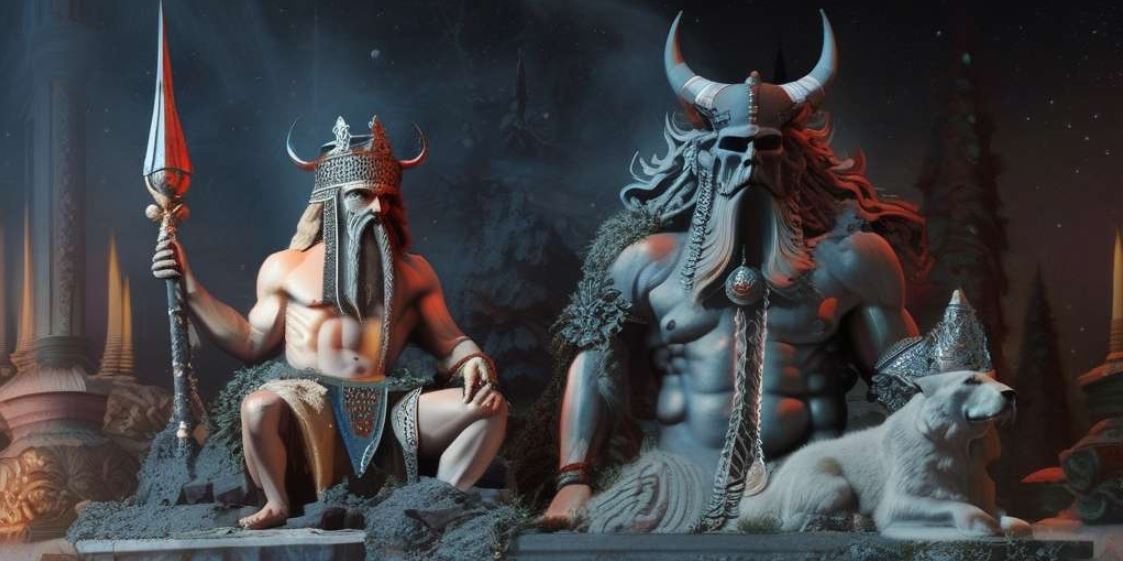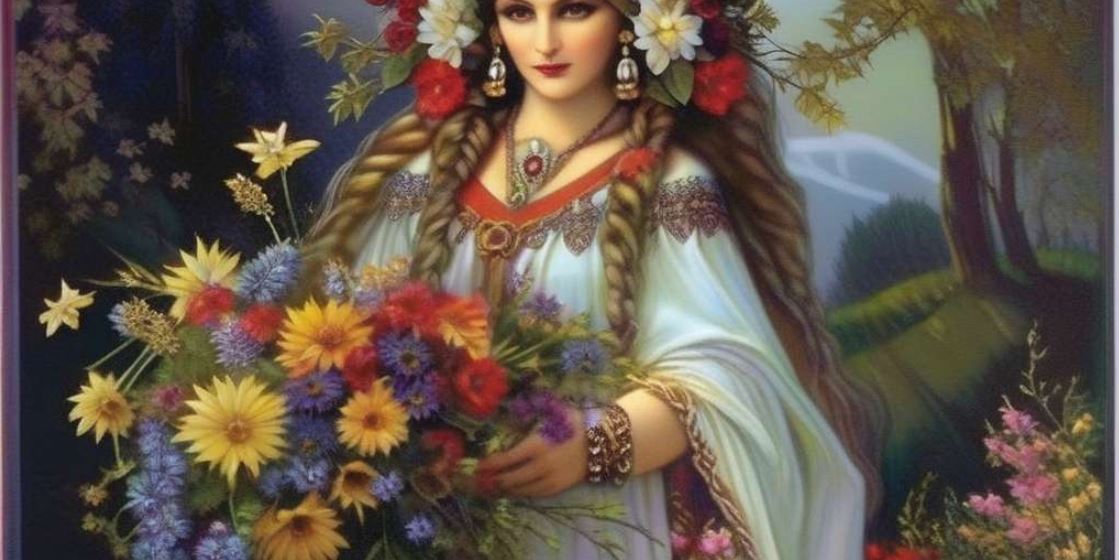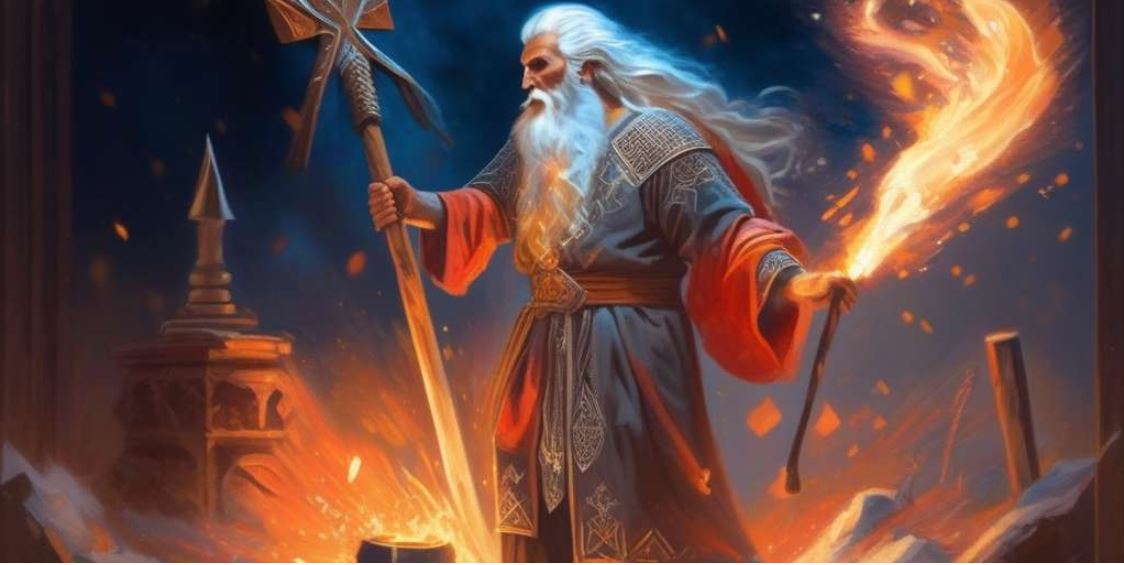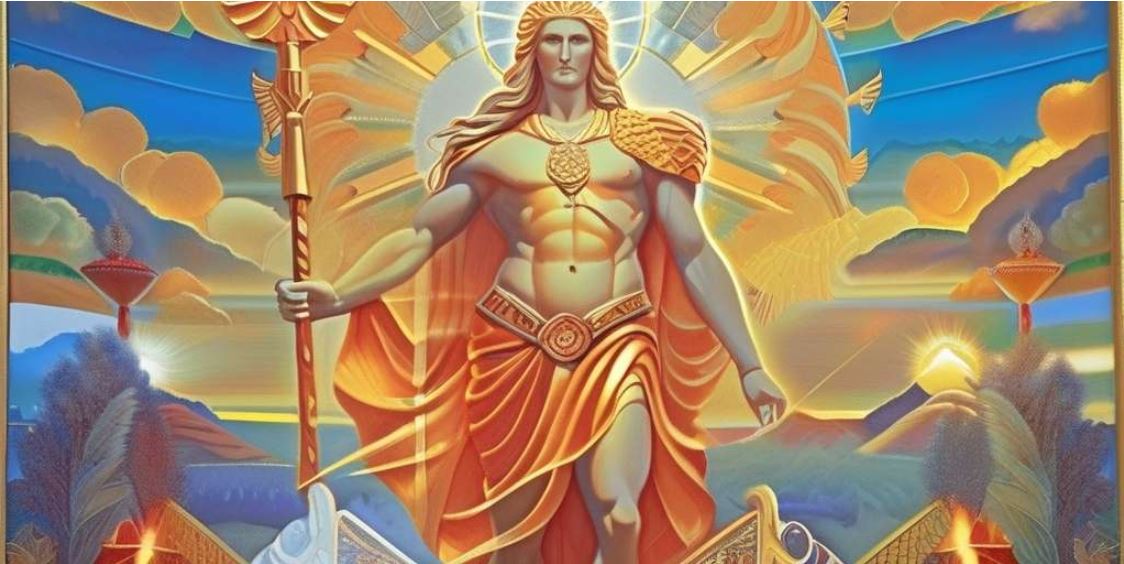Mighty Slavic God Perun: Unveiling the Power and Legends
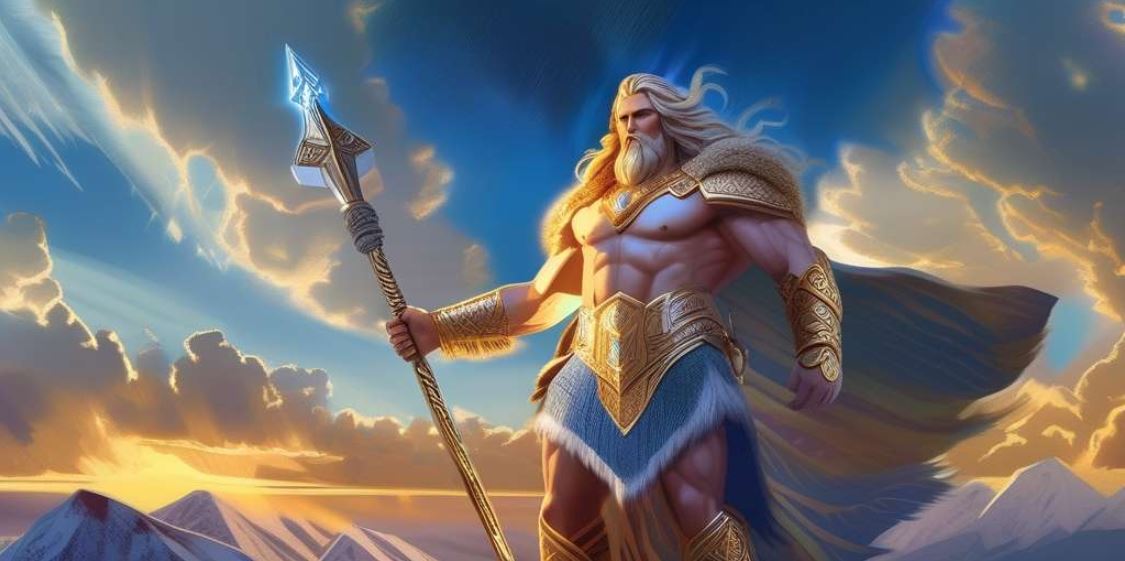
Slavic god Perun, a revered figure in Slavic mythology, holds a prominent place in the rich tapestry of Slavic beliefs. As the supreme god, Perun’s domain encompasses thunder, lightning, and the sky.
Deeply ingrained in Slavic cosmology, Perun played a vital role in the creation of the world and engaged in mythological clashes with other deities, most notably Veles. This article explores Perun’s legends, cultural influence, and enduring legacy, shedding light on his significance beyond Slavic mythology.
Delve into the captivating realm of Slavic god Perun to unravel the mysteries of ancient traditions and beliefs.
The Origins of Slavic God Perun
The Slavic god Perun holds a prominent place in Slavic mythology, embodying the power and might of thunder, lightning, and the sky. In Slavic mythology, Perun is revered as a supreme deity, revered for his ability to control the elements and protect the people from evil forces.
Perun’s role as a supreme god is significant in Slavic history, as he represents strength, justice, and divine authority.
Perun in Slavic Mythology
In Slavic mythology, Perun is depicted as a fierce warrior and protector, associated with the forces of nature. He is often portrayed as a bearded man wearing armor, wielding a mighty axe or hammer.
Slavic mythology attributes thunder and lightning to Perun’s fierce battles with evil entities, symbolizing his strength and power.
Perun and His Role as a Supreme God
Perun’s status as a supreme god in Slavic mythology is linked to his authority over the celestial realm and natural phenomena. He is regarded as the ruler of the gods, symbolizing the cosmic order and maintaining balance in the world.
As the god of thunder and lightning, Perun’s actions and decisions play a crucial role in shaping the Slavic belief system.
Followers of Perun perceive the sky as a gateway to divine realms, where earthly and celestial spirits converge.
It symbolizes the harmonious interconnectedness of the divine and mortal realms.
Perun’s domain over thunder, lightning, and the sky grants him unparalleled power and influence within Slavic mythology. Through the display of his natural might, he ensures the balance of cosmic forces, protecting the Slavic world from chaos and malevolent entities.
- Perun’s association with thunder and lightning
- The symbolism of sky and its connection to Perun
- The power and influence of Perun’s domain
Perun in Slavic Cosmology
Understanding the Slavic worldview provides insight into the importance of Perun and his divinity within their cosmology.
At the core of the Slavic worldview is the belief in a layered universe, where a tripartite cosmology divides the realms into the celestial, earthly, and underworld. Perun, as the god of thunder and lightning, represents the celestial realm and serves as a bridge connecting the divine and mortal planes.
According to Slavic mythology, Perun played a vital role in the creation of the world. As a powerful deity, his lightning bolts were instrumental in shaping the landscape and bringing order to the chaos that existed before creation.
Mythological Encounters: Perun and Other Slavic Deities
These encounters reflect the intricate interplay between gods, shaping the fate of the Slavic cosmos.
Perun, the mighty Slavic god, is shrouded in captivating legends and stories that have been passed down through generations. Let’s delve into the mythical tales surrounding this awe-inspiring deity.
Perun’s heroic exploits showcase his immense power and unwavering commitment to protecting the celestial realms. From triumphing over monstrous creatures to defending the world from chaos, each myth irrefutably reinforces Perun’s status as the pinnacle of divine strength.
In Slavic folklore, Perun is symbolically depicted in various forms, each representing different facets of his persona. These representations range from thunderbolts, oak trees, and eagles, all embodying his thunderous might and authority over the natural forces.
Slavic art offers glimpses into the rich history and reverence for Perun. Intricate carvings, sculptures, and paintings depict the god in regal attire, wielding his lightning-infused hammer. These artistic creations not only serve as symbols of admiration but also provide valuable insights into the cultural significance of Perun in Slavic society.
- Heroic Exploits of Perun in Slavic Mythology
- Symbolic Representations of Perun in Folklore
- Historic Accounts and Depictions of Perun in Slavic Art
Perun’s Influence in Slavic Culture
The significance of Perun in Slavic identity is profound, as his portrayal represents the embodiment of strength, power, and protection. As the supreme deity, Perun held a special place in the hearts and minds of the Slavic people, symbolizing their collective heritage and traditions.
The Significance of Perun in Slavic Identity
Perun’s image and symbolism were deeply intertwined with the core values and belief systems of the Slavic culture. He represented the ideals of bravery, justice, and assertiveness, which resonated strongly with the Slavic identity.
Additionally, the worship of Perun served as a unifying force, fostering a shared sense of community and purpose among the Slavic tribes.
Perun’s Connection to Kievan Rus and Russian History
Perun’s influence extended beyond mythology and played a vital role in shaping the history of Kievan Rus and Russia. In the early medieval period, Perun was highly revered by the ruling elite and played a central role in the establishment of Kievan Rus as a political and cultural powerhouse.
His name can be found in numerous historical accounts and inscriptions, showcasing the significance of Perun in Russian history.
Transformations of Perun’s Worship in Modern Times
In modern times, the worship of Perun has undergone transformations due to changing societal dynamics and the spread of Christianity. Although his worship has diminished, elements of Perun’s influence can still be observed in Slavic customs, folklore, and art.
He remains a symbol of cultural pride and resilience, reminding Slavic communities of their rich historical heritage and ancestral connections.
Unraveling the Perun-Veles Conflict
The conflict between Perun and Veles is a captivating aspect of Slavic mythology, steeped in deep symbolism and cultural significance. In the mythological clash of Perun vs. Veles, these two powerful deities represent opposing forces and ideologies within Slavic beliefs.<
> < >The Mythological Clash: Perun vs. Veles <
>The Mythological Clash: Perun vs. Veles<
> The clash between Perun, the god of thunder and the sky, and Veles, the god of the underworld and earth, is central to Slavic mythology. It symbolizes the perpetual struggle between order and chaos, light and darkness, and the forces of nature.
Their battles, often represented as epic encounters in folklore and legends, reflect the perpetual cosmic cycle of creation and destruction.< > <
>Symbolic Meaning and Cultural Significance of Their Opposition<
> The opposition between Perun and Veles holds profound symbolic meaning in Slavic culture. Perun embodies the ideals of strength, courage, and the defense of the mortal realm against the forces of chaos.
Veles, on the other hand, represents the underworld, earthly realms, and the unknown. This opposition reflects the eternal struggle for balance and harmony in the world. The conflict also serves as a reminder of the need for human beings to navigate the complexities of life, making choices between opposing forces and finding their own path.<
> <
>Interpreting the Perun-Veles Conflict in Slavic Beliefs<
> Interpreting the Perun-Veles conflict highlights the multifaceted nature of Slavic beliefs and the dynamic interaction of various deities. It encompasses themes such as duality, the cyclical nature of life, and the inherent tension between opposing forces.
The conflict may be understood as an allegory for the human experience, reflecting the constant struggle between different aspects of our own nature and the quest for balance and self-realization. By delving into the intricacies of this legendary rivalry, we gain valuable insights into the rich tapestry of Slavic spirituality and its profound impact on the culture and identity of the Slavic people.<
> Exploring the Perun-Veles conflict allows us to unravel the complexities of Slavic mythology and better understand the intricate web of beliefs and rituals that shaped the worldview of ancient Slavic societies.
Perun’s Legacy and Impact
Perun, the Slavic god of thunder and lightning, has left a profound legacy that extends far beyond Slavic mythology. His influence can be seen in various aspects, showcasing the significance of his presence in both ancient and modern times.
Perun’s Influence on Indo-European Thunder Gods
Perun holds a special place among Indo-European thunder gods, as his attributes and symbolism share similarities with other deities in different cultures. Scholars have identified connections between Perun and gods like Thor in Norse mythology and Zeus in Greek mythology.
This cross-cultural influence highlights the widespread recognition and reverence for thunder gods across various Indo-European societies.
Perun’s Significance Beyond Slavic Mythology
Perun’s significance transcends the boundaries of Slavic mythology, leaving a lasting impact on the cultural and religious landscape. Through his association with thunder, lightning, and the sky, Perun represents power, authority, and protection against evil forces.
His symbolic importance extends to broader narratives of spirituality and divine forces that resonate with diverse belief systems beyond Slavic traditions.
The Enduring Presence of Perun in Modern Slavic Communities
Even in modern times, Perun holds a special place in Slavic communities around the world. Despite the changes in religious practices and the rise of other belief systems, Perun’s existence and role have persisted.
Ceremonies, rituals, and festivals dedicated to Perun continue to be observed, keeping the memory and influence of the mighty thunder deity alive in the hearts and minds of modern Slavic people.
Exploring Further: Slavic God Perun in Academic Studies
Embarking on an academic journey into the realm of Slavic mythology, numerous notable research and publications have shed light on the enigmatic figure of Perun and his significance. Scholars have delved into the rich tapestry of Slavic folklore to unravel the fascinating myths and stories surrounding this revered god.
Notable Research and Publications on Perun and Slavic Mythology
Within the realm of academia, several works have emerged as significant contributions to the study of Perun and Slavic mythology. These scholarly endeavors explore various aspects of Perun’s character, delve into his role within the pantheon of Slavic gods, and shed light on the intricacies of his worship and cult throughout history.
Theoretical Perspectives and Comparative Studies
Expanding beyond individual research, scholars have also delved into theoretical perspectives and undertaken comparative studies to contextualize Perun within a broader mythological framework. These endeavors strive to draw connections between Slavic mythology and other Indo-European traditions, uncovering potential shared themes and myths.
Emerging Topics and Future Areas of Research
As the study of Slavic mythology continues to evolve, emerging topics and future areas of research are being explored. Scholars are investigating previously overlooked aspects of Perun’s worship, examining cross-cultural influences on Slavic mythology, and exploring potential connections between Perun and other thunder gods across different mythological traditions.
- Exploration of Perun’s role in Slavic cosmology and his relation to other deities
- Analysis of Perun’s symbolism and its cultural significance throughout history
- Investigation into the influence of Perun’s worship on Slavic identity
- Comparative studies on Perun and thunder deities in other mythologies
This vibrant academic landscape invites scholars and enthusiasts alike to delve deeper into the fascinating realm of Slavic mythology, uncovering new insights into the mysteries surrounding the mighty Slavic god Perun.
Post navigation
Navigate through the captivating world of Slavic god Perun by exploring the following sections:
- The Origins of Slavic God Perun
- Perun’s Domains: Thunder, Lightning, and Sky
- Perun in Slavic Cosmology
- Perun’s Legends and Stories
- Perun’s Influence in Slavic Culture
- Unraveling the Perun-Veles Conflict
- Perun’s Legacy and Impact
- Exploring Further: Slavic God Perun in Academic Studies
Delve into the rich tapestry of Slavic mythology and discover the profound significance of Perun, the supreme god associated with thunder and lightning.
As you navigate through these sections, unravel the mythical clashes, explore Perun’s powerful domains, and understand his enduring legacy in modern Slavic communities. With notable research and publications shedding light on Perun’s influence, gain deeper insights into this fascinating deity.
The exploration of Slavic god Perun promises to take you on an enlightening journey into ancient beliefs, cultural impact, and the symbolism underlying the mystical world of the Slavic pantheon………….

